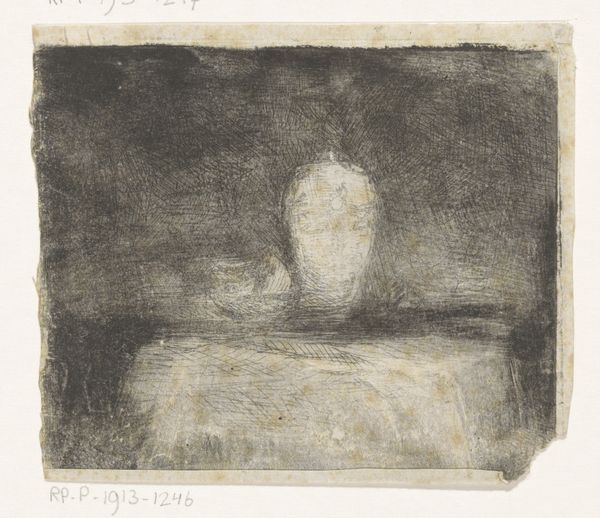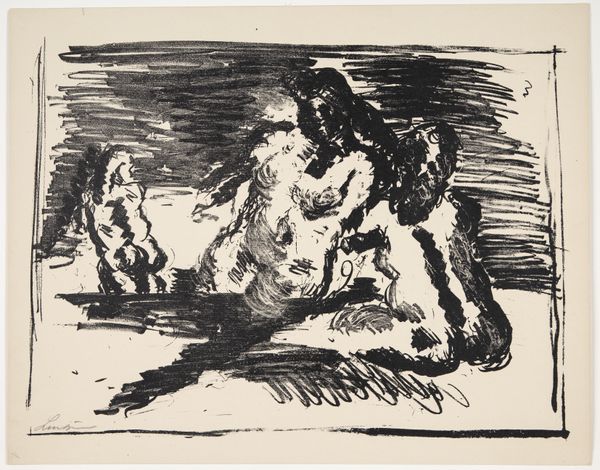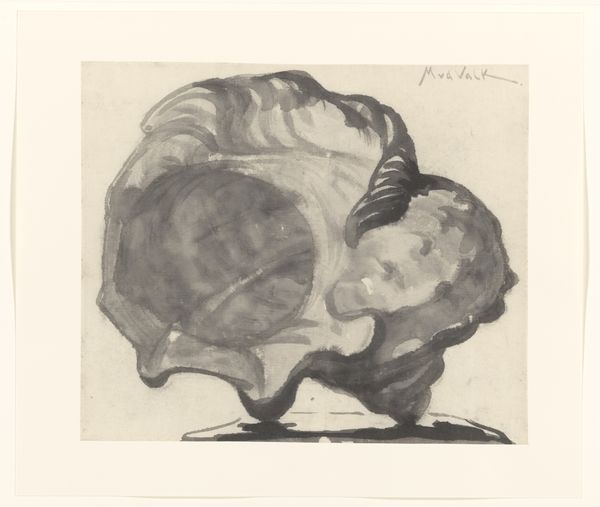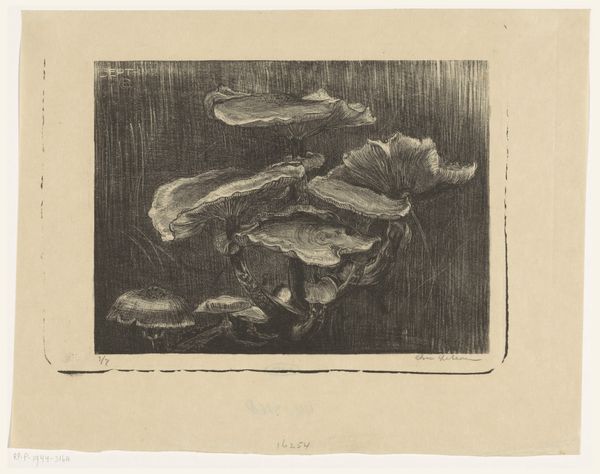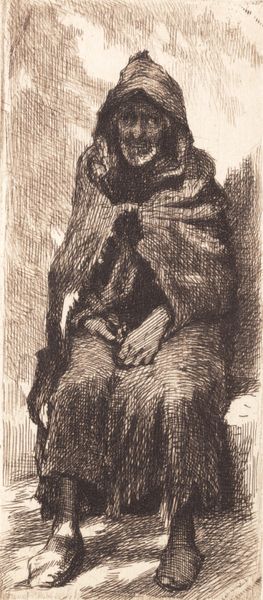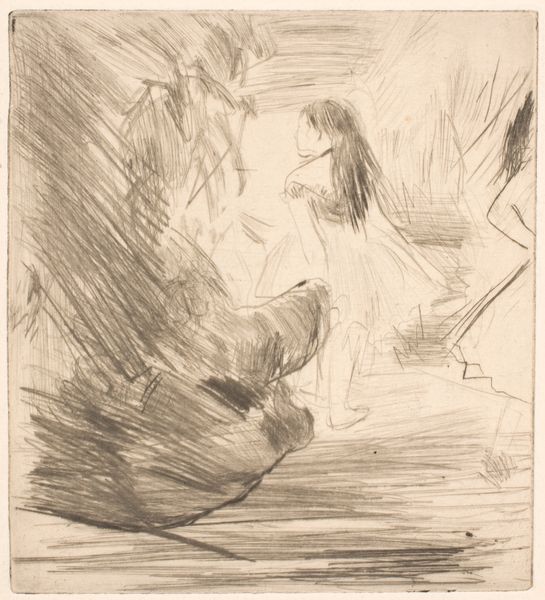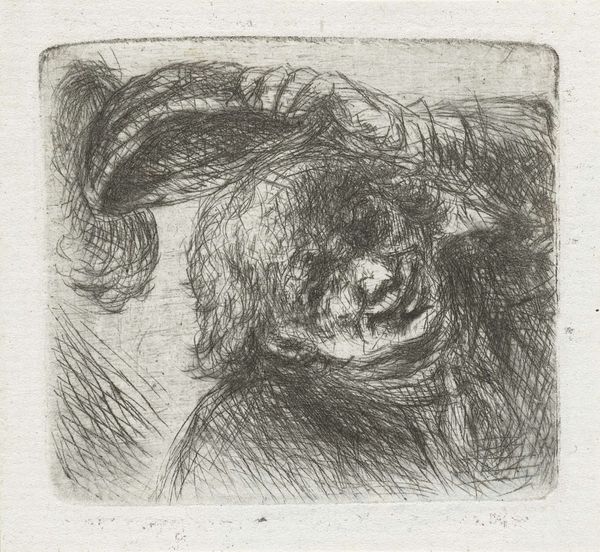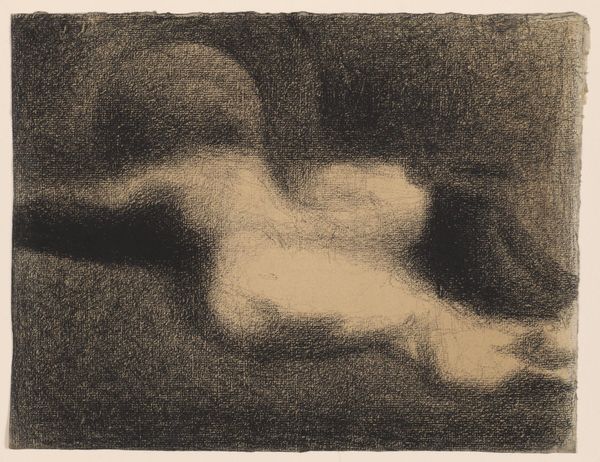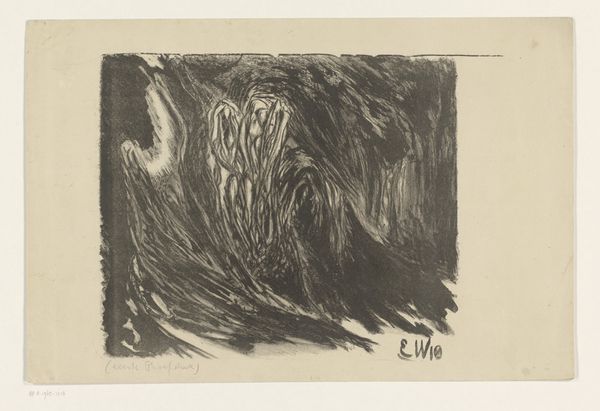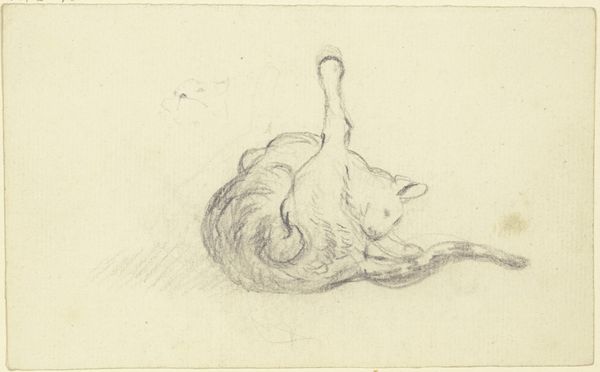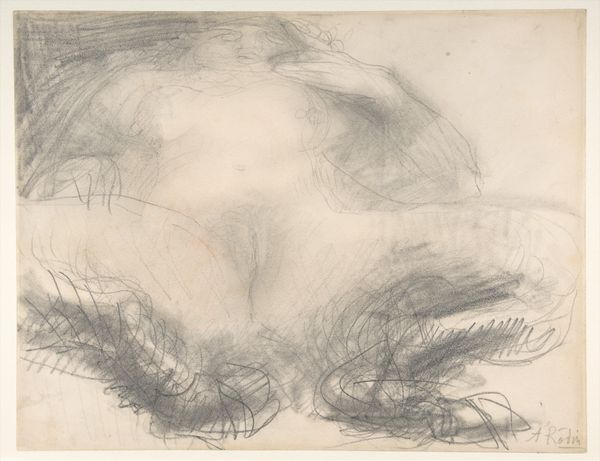
drawing, print, etching, paper
#
pencil drawn
#
drawing
# print
#
etching
#
pencil sketch
#
figuration
#
paper
#
pencil drawing
#
symbolism
#
history-painting
#
nude
Copyright: Public domain
Curator: We are looking at Paul-Albert Besnard's "Leda Sleeping," an etching dating back to 1913. Editor: My initial impression is one of disquiet. The tangled lines create a sense of unease, of something lurking just beneath the surface of the composition. Curator: The dense cross-hatching certainly contributes to that feeling. It almost obscures the figures of Leda and the swan, blending them into a single, textured form. The lack of clean lines and distinct forms moves beyond pure representation, invoking a symbolic dimension. Editor: Absolutely. Considering the myth of Leda and the Swan, that sense of obfuscation feels pointed. It mirrors the violence inherent in the narrative, a kind of visual violation made all the more unsettling by its hazy depiction. There is nothing romantic here; it's all dark encounter. Curator: Precisely. The artist utilizes a limited tonal range, mostly darks, to express an intensity. Note how the swirling lines create movement, emphasizing the dramatic tension between the figures. The absence of detail invites multiple interpretations of the act itself, allowing the viewer to contemplate on themes of power and desire. Editor: Yes, and look how the swan's form seems to dominate Leda. The work invites us to grapple with the intersection of myth, power, and the female body within historical art narratives, prompting critical analysis rather than passive observation. The composition seems to question what is being concealed, inviting us to probe uncomfortable aspects within art history. Curator: A thought-provoking print from Besnard; its formal qualities invite deep analysis of his mark-making, revealing a visual story with layered meaning. Editor: An uncomfortable but important contribution that unearths an aesthetic experience from a well known myth and invites deeper conversation.
Comments
No comments
Be the first to comment and join the conversation on the ultimate creative platform.
